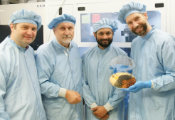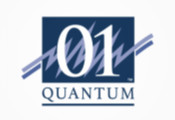EPB Quantum Network Powered by Qubitekk Hosts Oak Ridge National Laboratory’s First Run on a Commercial Quantum Network
CHATTANOOGA, Sept. 11, 2024 —- For the first time, Oak Ridge National Laboratory (ORNL) will run equipment developed at its research facilities on a commercially available quantum network at EPB Quantum Network powered by Qubitekk. Starting this month, ORNL is testing its Automatic Polarization Compensation (APC), a key technology needed to convey quantum data across a network while maintaining all its complexities and probabilities. The University of Tennessee at Chattanooga (UTC), the first American university to host a permanent connection to a commercially available quantum network, is also participating in the effort to validate the technology's commercial viability.
“ORNL’s strong collaborations with EPB and UTC create an ideal opportunity to develop and validate cutting-edge technologies by utilizing Chattanooga’s world-class fiber optic network and smart grid as a proving ground,” said ORNL Director Stephen Streiffer. “This is an invaluable partnership because it allows our researchers to run technologies they’ve developed in the lab on a commercially available quantum network, which is an essential step in eventually bringing them into broader use.”
APCs are a critical component in developing the ability to transmit information over real-world quantum networks consistently. They help mitigate data interference caused by common factors that impact the fiber optic cables that can serve as the “highway” for data maintained in a quantum state, like wind, a range of outdoor temperatures, and other environmental disruptions. ORNL’s APC uses a new multi-axis control mechanism to measure and compensate for polarization changes on quantum fiber networks. The ultra-sensitive detection achieves fast and complete control of light polarization with low noise to ensure continuous operation without downtime.
EPB Quantum Network in downtown Chattanooga hosts ORNL’s APC, while the entanglement source and other equipment run from a node on UTC’s campus connected to EPB Quantum Network half a mile away.
“Efforts like this to validate the commercial viability of quantum technologies are exactly what we envisioned when developing EPB Quantum Network,” said EPB CEO David Wade. “We’re proud to host ORNL’s first quantum run outside of its research facilities while also being able to engage with UTC as our local university in bringing the resources of its growing quantum initiative to bear on this critical project.”
EPB Quantum Network currently has capacity for ten quantum interconnected user nodes across downtown Chattanooga using commercial network equipment designed and manufactured by Qubitekk, including its own APC.
“APCs are essential components for interconnecting quantum technologies that have the potential to optimize the management of our electrical grids, accelerate the development of new medicines and materials, and strengthen national security with unbreakable encryption,” said Duncan Earl, co-founder and CTO at Qubitekk. “Collaborative runs like this on real-world networks are critical to developing the array of commercially viable quantum technologies necessary for the U.S. to compete in this rapidly emerging global industry.”
EPB Quantum Network is available for public and private sector researchers and technologists to run quantum equipment and applications in an established fiber optic environment. It integrates a fiber optic infrastructure with the latest foundational quantum equipment and software to accelerate the process of bringing quantum technologies to market.




































